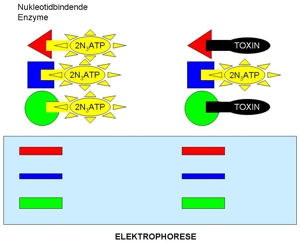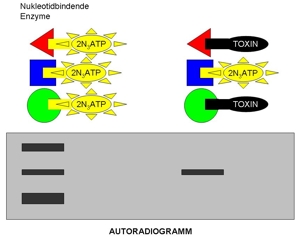It is widely known that teeth play a major role in maintaining good health. The interactions are manifold and involve issues relating to aesthetics, facial expressions, chewing function and toxicology. Research from the USA has closed the gaps in quantifiability in the assessment of the presence of oral toxins. In this context, teeth take on a new dimension in the pathogenesis of illness and maintaining good health.
Prof. Boyd E. Haley has identified teeth as a potential source of extremely toxic substances. It is the culmination of more than 35 years of research in the area of protein biochemistry,heavy metal neurotoxicity and neurodegenerative diseases.
Studies show that the dentinal tubules of root-filled teeth (nonvital, endodontically treated) and non root-filled but paradontally diseased teeth can house various bacteria. These bacteria are virtually impossible to treat with antibiotics and local disinfectants. They are therefore a constant reservoir for systemic bacterial infections. Many of these bacteria were also associated with parodontosis (e.g. streptococci, peptostreptococci, eubacteria, bacteroides, fusobacterium, actinomyces).
They are constantly producing toxic metabolites, including volatile hydrogen sulphide compounds such as methyl mercaptan and hydrogen sulphide, transient fatty acids such as propionic acid and butyric acid, polyamines such as putrescine and cadaverine, as well as further bacterial proteins such as proteases and phosphatases, but also antigens (e.g. lipopolysaccharides).
In addition to bacteria, these toxins can be reabsorbed and systemically spread with serious implications for health in some cases, such as:
- Endocarditis
- Infarct
- Apoplexy
- Hypertension
- Arteriosclerosis
- Eye complaints
- Pneumonia
- Haematological diseases
- Arthritides
- Infections of joint implants
- Brain abscesses
- Alzheimer’s
- Low birth weight
Many of these bacterial toxins and bacterial proteins can be identified in the sulcus fluid (secretion that forms in the pockets) of infected teeth.
In nonvital teeth, the endodontic circulation is disturbed and a basic reason why such teeth can pose a general health risk over the course of time.


On the healthy tooth,
the dentinal tubules are
washed and cleaned from
the inside outwards.
This cleaning process is
not performed on the tooth
with a dead root, and bacteria
migrate from the oral cavity
into the tooth:


The sample material taken from the sulcus fluid with an absorber pin is incubated with a mixture of cleaned proteins (ATP-binding enzymes) for 60 minutes and then saturated with a radioactively marked ATP, [32P]N3ATP and fixed with UV light (“photolabelling”).
The more ATP binding points on the enzymes are occupied by toxins, the lower the radioactive radiation. With subsequent electrophoresis (SDS-PAGE) and autoradiography (measurement of radioactivity), the various toxins can be represented and quantified.


All test enzymes have something extremely important in common. Each is either directly or indirectly involved in the production of ATP, the energy used by all cells. Inhibiting their activity therefore has an impact on the tissues or organs concerned that should not be underestimated.




